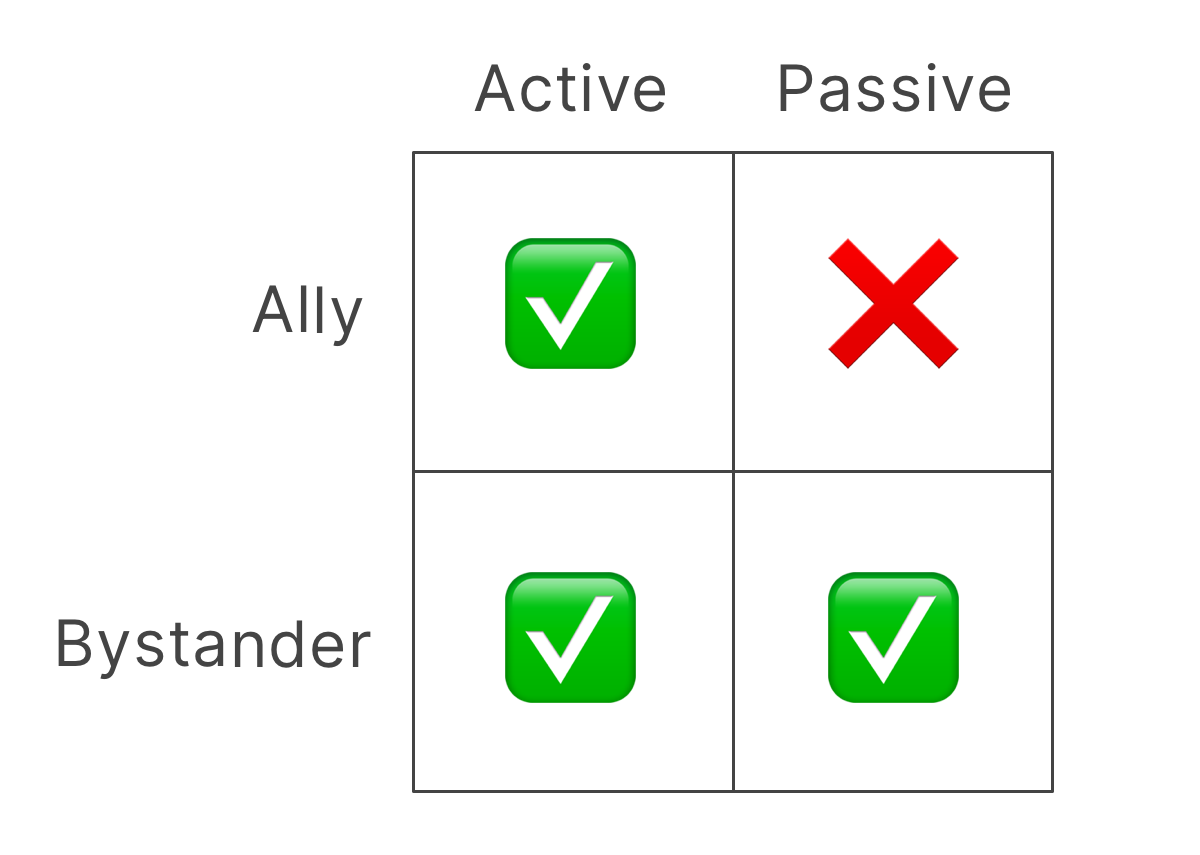Becoming Active Allies
When I was in elementary school, we participated in a series of workshops designed to help us navigate bullying. We'd participate in skits to act out what confronting a bully on the playground might look like and discuss strategies for intervening.
In one of these classes, we talked about the difference between being an ally and a bystander. We used a chart like this one to plot the different roles you might play when encountering conflict:

The purpose of this table, of course, was to illustrate the fact that it is impossible to be a passive ally. You can be an active ally by confronting the bully or an active bystander by egging them on. But if you are standing on the edge of a fight, silently supporting the recipient of bullying, you are not a passive ally — you're a passive bystander.
As adults, this is perhaps obvious when spelled out so explicitly. But there are many places outside of bullying where this framework is useful.
Consider social networks, for example: In the beginning, these networks tried to argue that they were simply neutral channels. In the same way an ISP doesn't prevent you from seeing racist content or harassing behavior online, social network execs argued they were simply promoting free speech — that they were not in the business of making editorial decisions about which content gets amplified or suppressed. (There were exceptions, of course, for things like nudity and illegal speech.)
Over time, however, we discovered that this neutrality was a mirage, because misinformation and inflammatory content typically get higher engagement. And algorithms aren't objective arbiters free of the biases that affect their creators.
Social networks were trying to be passive bystanders. And even as they've evolved to play heavier moderator roles over time, these "neutral" platforms continue to struggle with harassment, which disproportionately alienates women and minorities — exactly the voices that the internet should be amplifying.
The internet (and technology as a whole) magnifies human — both the good and the bad. But we can design and use technology in ways that reward the former.
That process starts with us serving as active allies for the world we want to live in — not passive bystanders to the status quo.
